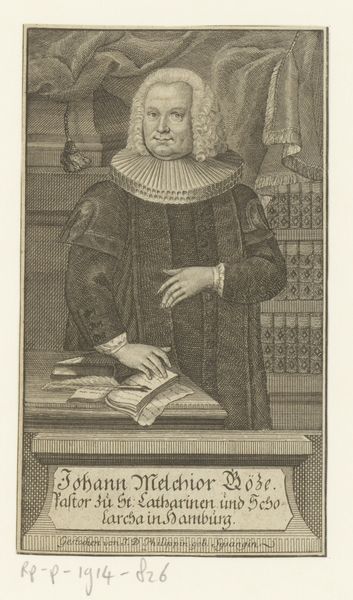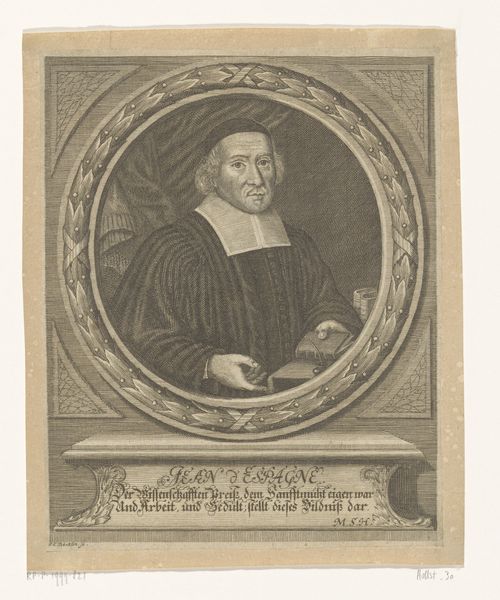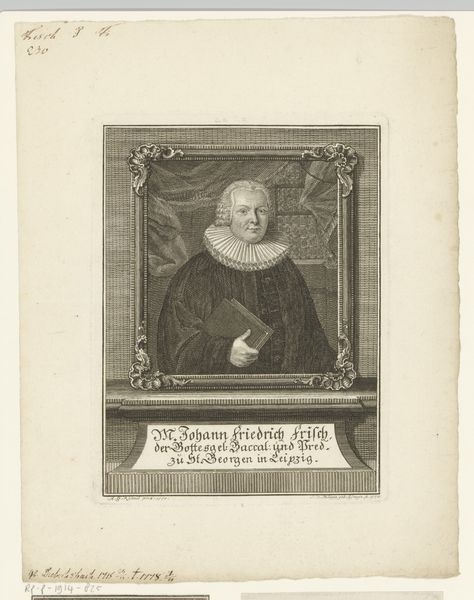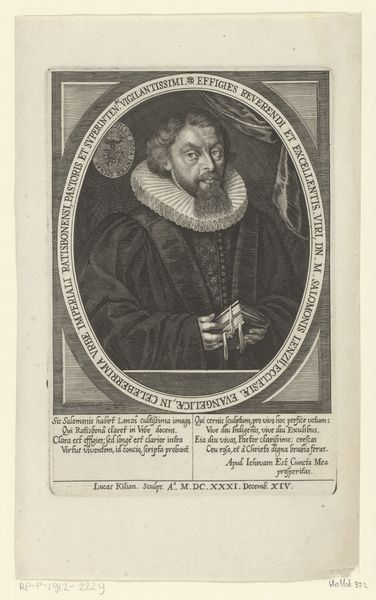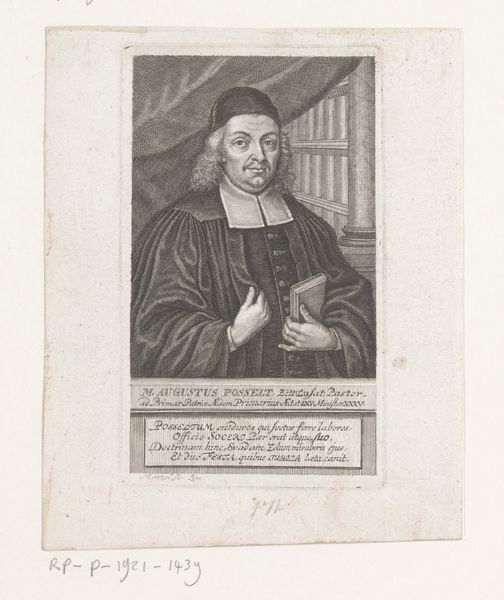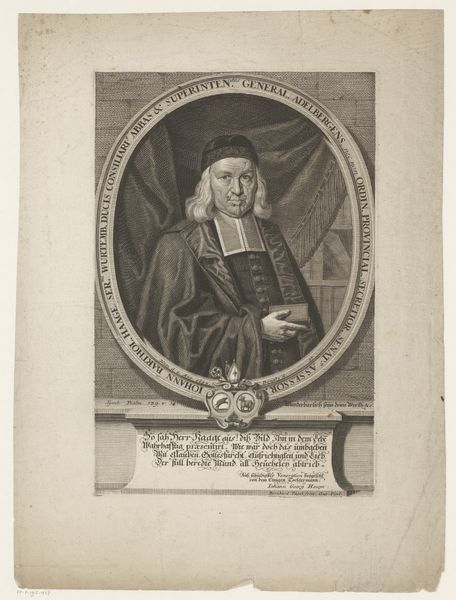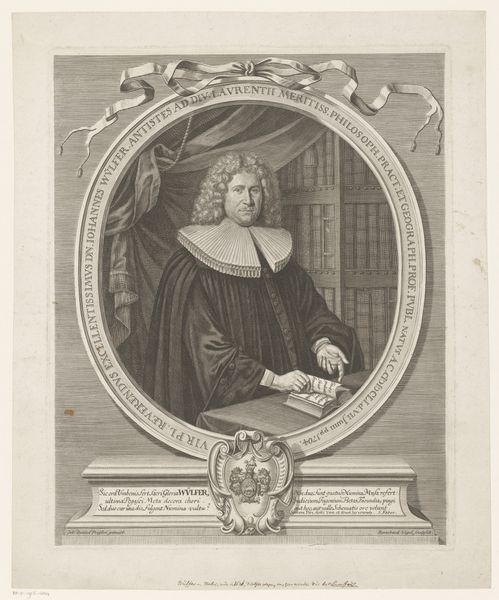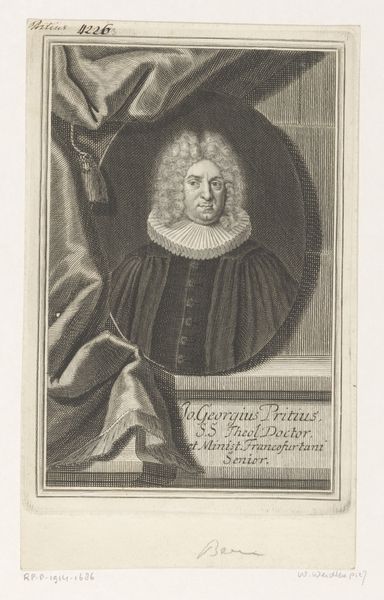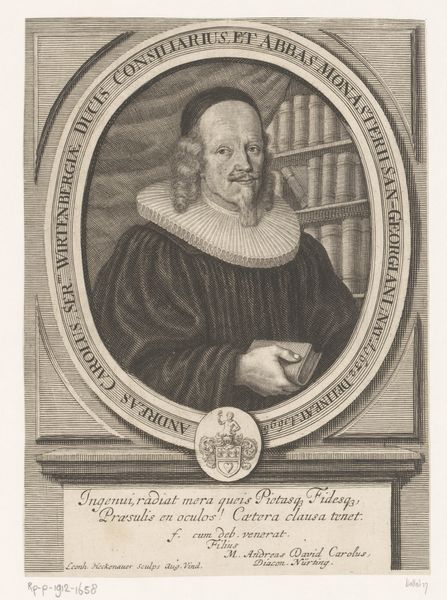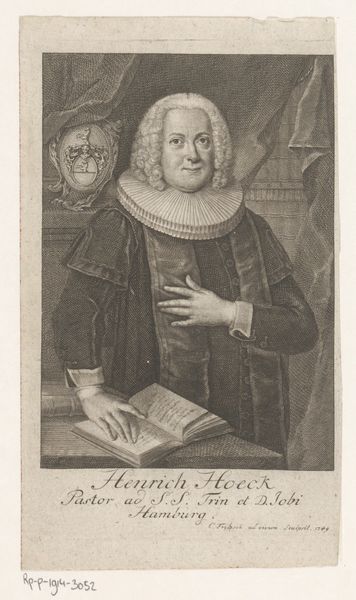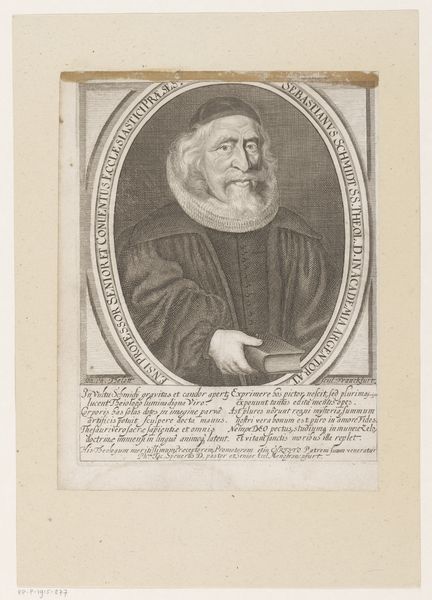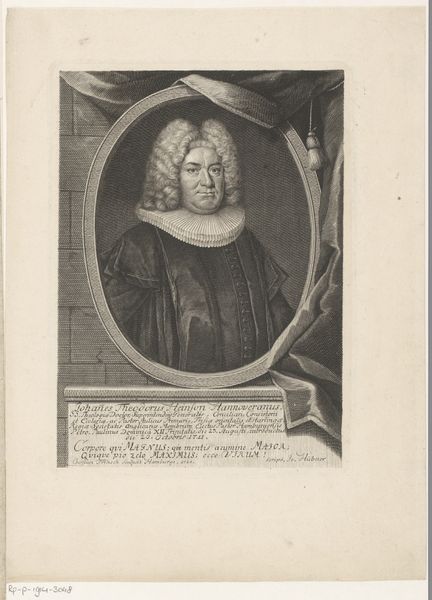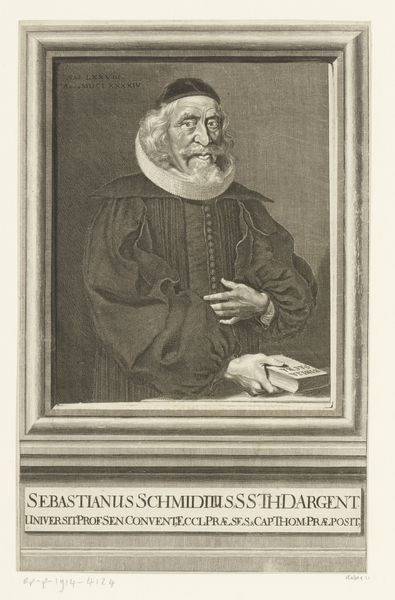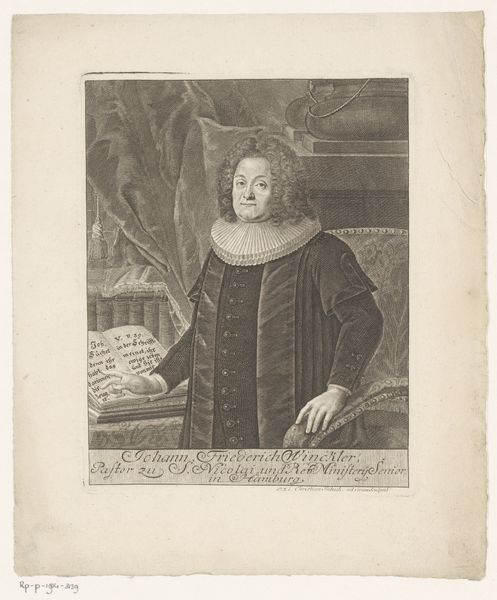
metal, engraving
#
portrait
#
baroque
#
metal
#
old engraving style
#
portrait drawing
#
engraving
Dimensions: height 180 mm, width 122 mm
Copyright: Rijks Museum: Open Domain
Editor: We're looking at a piece called "Portret van Christian Ludwig Ermisch" made sometime between 1719 and 1732 by Johann Georg Beck. It's an engraving on metal, currently held at the Rijksmuseum. What strikes me first is the sheer level of detail achieved with lines, creating so much texture. What elements stand out to you, in terms of its formal qualities? Curator: Initially, one notes the elaborate play of contrasting textures. Observe the subject’s voluminous ruff, sharply juxtaposed against the stark smoothness of his face. This creates a visual tension, focusing the gaze. Consider, too, how Beck uses linear perspective within the confines of the oval frame to construct spatial depth. Does this linear intricacy enhance the symbolic value of the portrait, do you think? Editor: I hadn't thought about that consciously. The linear density definitely gives a sense of seriousness. Almost like, the tighter the lines, the tighter the mind. Is the portrait's baroque style simply a function of its time, or are there specific baroque elements that are meaningful? Curator: Indeed. Consider how the composition directs our eye— from the soft drapery at the upper left down towards the inscribed plinth on the right, a classic Baroque strategy of guiding the viewer's eye throughout the pictorial field. Furthermore, reflect on the balance between ornate detail and the overall structure; baroque art often employed ornamentation to convey both spiritual and psychological intensity, how do you see it functioning here? Editor: So it's not just decoration; it is almost a diagram of where to focus, with visual elements and patterns working to emphasize those features. Thanks, I now perceive those strategic contrasts that drive the composition. Curator: Precisely. It is about controlled orchestration using shape, line and tone, isn't it?
Comments
No comments
Be the first to comment and join the conversation on the ultimate creative platform.
